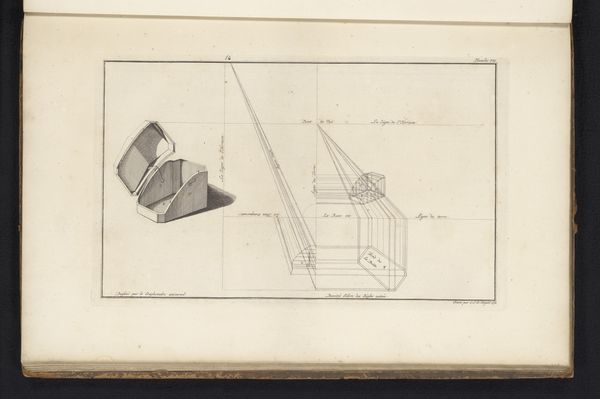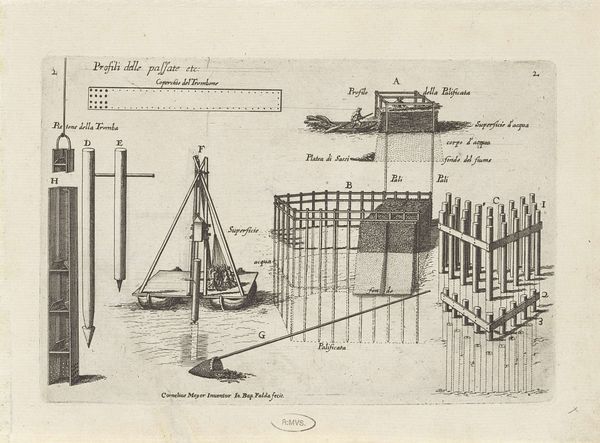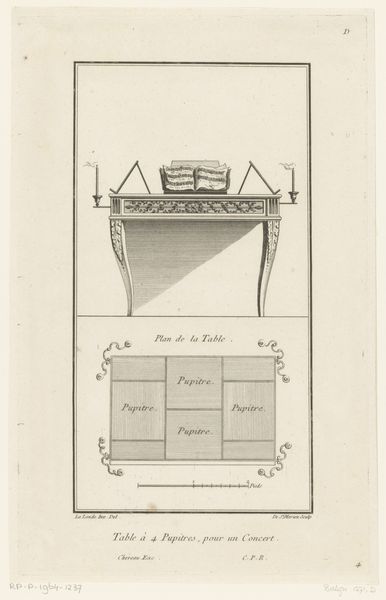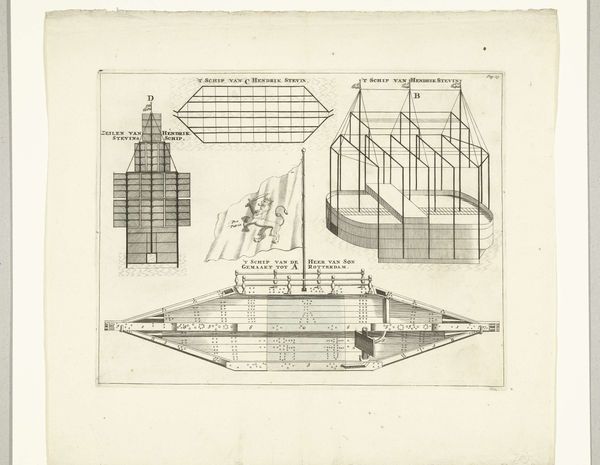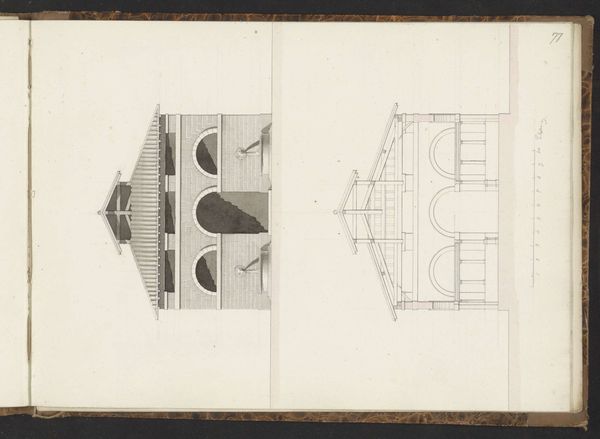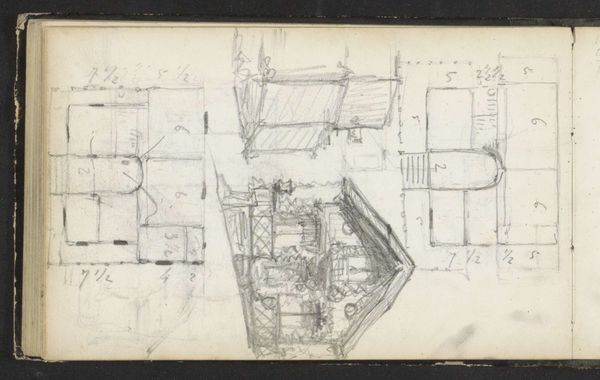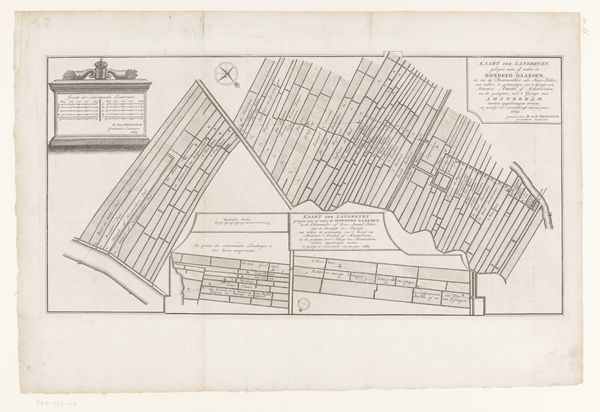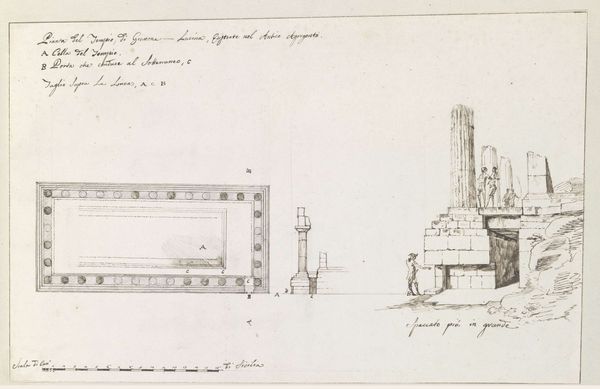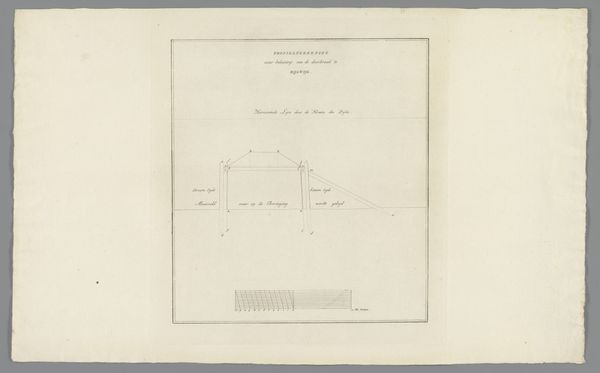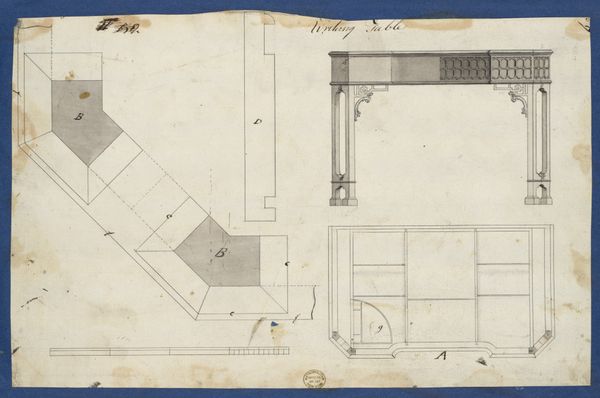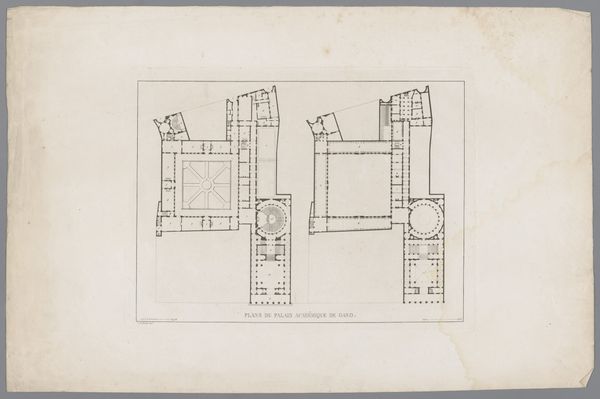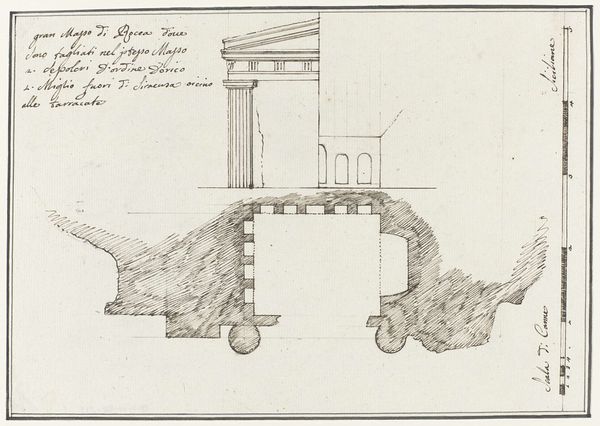
drawing, print, engraving
#
drawing
#
baroque
# print
#
old engraving style
#
landscape
#
historical photography
#
line
#
engraving
Dimensions: height 208 mm, width 319 mm
Copyright: Rijks Museum: Open Domain
Curator: Here we have "Profile of the Diemerzeedijk with a Crack" by Coenraad de Putter, created sometime between 1729 and 1737. It's an engraving. Editor: Immediately, what strikes me is the vulnerability. It's a technical drawing, but the stark lines highlighting the crack conjure a sense of impending disaster. Curator: The work meticulously depicts the materials used to construct the dike—the various layers of earth, wood, and what looks like stone revetment. It's almost like a recipe for building and, implicitly, maintaining this crucial infrastructure. You see how the hand of labor, and its potential failings, are etched into the landscape itself. Editor: Absolutely. The crack itself takes on symbolic weight, doesn't it? In a country so defined by its relationship with the sea, this fissure becomes a potent symbol of fragility and the ever-present threat of nature's power. The sailing ship in the distance only serves to enhance that feeling of precariousness. Curator: Indeed, and consider the economic implications. A damaged dike meant disrupted trade routes, flooded lands, and potential famine. This isn't just about aesthetic representation; it’s a record of potential material loss, highlighting the ever-present human struggle against the elements. Editor: I'm drawn to the Dutch text on the document seemingly laid atop the dike, "A crack in the Diemer dike, as it has burst following requests, and has since proven to be driven far over sea" it suggests legal appeals to protect and repair the land, which can speak volumes of that particular time's values, and collective anxieties around environmental changes. Curator: The very act of creating this print served a purpose. It wasn't just an artistic endeavor; it was a tool for disseminating information, for mobilizing resources to repair the breach. This blurring of the line between art and functionality speaks volumes about the material circumstances that gave rise to this image. Editor: Yes, what appears as just a 'historical photograph' invites us to reflect on both how we use images and symbols, to communicate cultural needs, memories and ideas, and the anxieties from our past. Curator: It all serves to illuminate a unique time, its people, its means of record keeping, and relationship to the environment, a confluence of events now imprinted permanently in history. Editor: Looking closely at this rendering helps one think about water and time, and how humankind tries to negotiate the forces that continue to shape us.
Comments
No comments
Be the first to comment and join the conversation on the ultimate creative platform.
